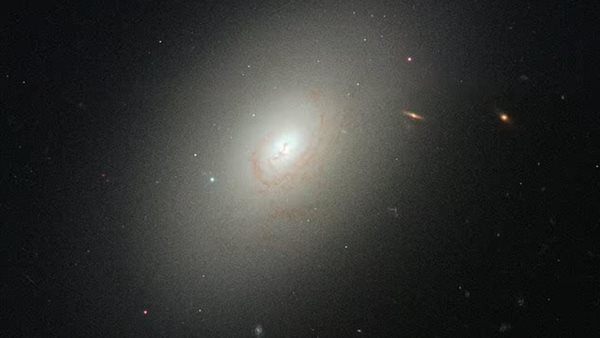Friday 17/November/2023 – 04:42 PM
Astronomers captured the massive explosion event of Comet Satanic for the fourth time on Tuesday, releasing the brightest light yet in an image hours after its start, and the image revealed the atmosphere of comet 12P/Pons-Brooks in the form of a perfect circle, according to the British Daily Mail.
Specifications of the satanic comet
Astronomers explained that the space rock is about 28 km long, and is described as a cold volcano because it violently spews ice and gas, and the comet’s illumination shines like an elliptical galaxy that is 600 million light-years away from Earth. The comet was described as the Devil’s Comet, due to the presence of two horns during previous explosions. As it headed towards Earth, however, astronomers did not detect signs of a dark corridor in the coma, and they believe that the pods may not sprout this time.
Comets consist of a core of ice, dust, and small rocky particles, surrounded by an outer coma, which is a hazy cloud of gases. It is also known as a cold volcanic comet, because it exhibits volcanic activity, but instead of ejecting molten rock and lava like a volcano onto Earth, a icy volcanic comet erupts A mixture of gases and ice.
According to scientists, when a cold volcanic comet approaches the Sun, as 12P/Pons-Brooks does, it heats up and builds pressure in the core until nitrogen and carbon monoxide explode, spewing icy debris through large cracks in the core’s crust. These gas streams can form shapes Distinctive when viewed through a telescope, like devil’s horns, also described as the horseshoe or Millennium Falcon from the Star Wars series.
History of the Satanic Comet
Devil’s Comet had previous outbursts on July 20, October 5, and November 1. A scientist first discovered it in 1812, and then again in 1883, determining that Devil’s Comet returns to the solar system every 71 years. Since the 19th century, it has been observed that There are fewer than 7 large outbursts, and the comet is on track in 2023 to match that number with just one year to go.
The comet is scheduled to reach its closest point in its orbit to Earth in June 2024, but it will pass at a safe distance, and after reaching the closest point to the planet, this space rock will return by force of gravity to the outer solar system and will not return until 2095.

